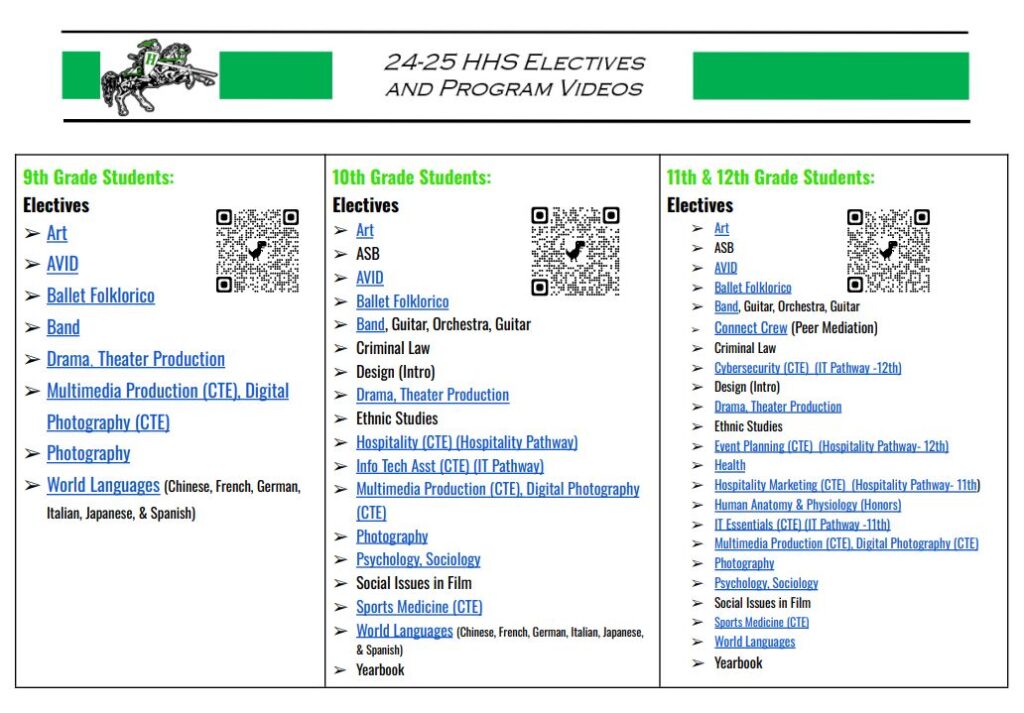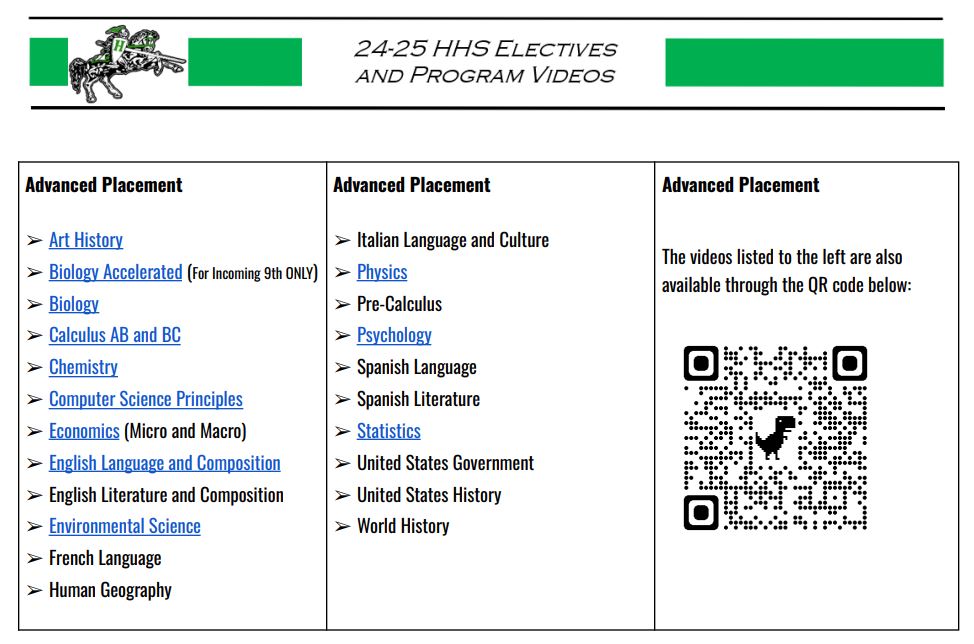Academics
Academics
Elective and AP Class Selections for 2024-25
(Click on the images below to access a document which features live links)


English Language Arts
With the adoption of these English-language arts content standards in 1997, California set forth for the first time a uniform and specific vision of what students should know and be able to do in this subject area. Reflecting a strong consensus among educators, these standards establish high expectations for all students. They embody our collective hope that all students become effective language users so that they can succeed academically, pursue higher education, find challenging and rewarding work, participate in our democracy as informed citizens, appreciate and contribute to our culture, and pursue their own goals and interests throughout their lives.
History / Social Science
With the History-Social Science Framework for California Public Schools as a guide to the eras and civilizations to study, these standards require students not only to acquire core knowledge in history and social science, but also to develop the critical thinking skills that historians and social scientists employ to study the past and its relationship to the present. It is possible to spend a lifetime studying history and not learn about every significant historical event; no one can know everything. However, the State Board hopes that during their years of formal schooling, students will learn to distinguish the important from the unimportant, to recognize vital connections between the present and the past, and to appreciate universal historical themes and dilemmas.
Mathematics
With the adoption of these content standards in mathematics, California is going beyond reform. We are redefining the state’s role in public education. For the first time, we are stating – explicitly – the content that students need to acquire at each grade level from kindergarten to grade twelve. These standards are rigorous. With student mastery of this content, California schools will be on a par with those in the best educational systems in other states and nations. The content is attainable by all students, given sufficient time, except for those few who have severe disabilities. We regard the standards as firm but not unyielding; they will be modified in future years to reflect new research and scholarship.
Physical Education
Physical education significantly contributes to students’ well-being; therefore, it is an instructional priority for California schools and an integral part of our students’ educational experience. High-quality physical education instruction contributes to good health, develops fundamental and advanced motor skills, improves students’ self-confidence, and provides opportunities for increased levels of physical fitness that are associated with high academic achievement.
Science
The adoption of science content standards and the work to align the whole of the educational system to them have placed our state on the path to success in science education. The standards have brought certainty of knowledge and purpose to all. They are comprehensive and specific. They reflect our continuing commitment to excellence.
Visual and Performing Arts
The arts are a dynamic presence in our daily lives, enabling us to express our creativity while challenging our intellect. Through the arts, children have a unique means of expression that captures their passions and emotions and allows them to explore ideas, subject matter, and culture in delightfully different ways. Achievement in the arts cultivates essential skills, such as problem solving, creative thinking, effective planning, time management, teamwork, effective communication, and an understanding of technology.
World Languages
Studying a foreign language completes and improves a student’s education while providing the foundation for further personal enrichment, scholastic achievement, and economic opportunities. The need for California students to learn and understand a foreign language is more evident today than in times past. In recent years California has been transforming its education system so that children, the state’s future leaders, are able to meet the challenges of the twenty-first century. This framework seeks to improve foreign language education by relying on the guidelines of the Language Learning Continuum.
